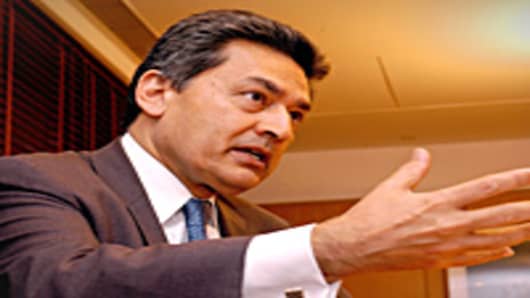In addition, after leaving the top spot at McKinsey, Gupta was tapped for the boards of directors of five public companies—American Airlines parent AMR , global outsourcer Genpact, Goldman Sachs , Harman International , and Procter & Gamble .
He also served on the supervisory board of Russia's Sberbank and the board of the Qatar Financial Centre. There aren’t very more people in the world who would have had more access to inside information than Gupta.
So let’s start with this question: if we look back at past deals involving Gupta, do we see anything similar to the pre-announcement trading that we saw in shares of Goldman before the Berkshire Hathaway investment was announced?
The answer is yes. In 2005, Proctor & Gamble made a $61 billion bid for Gillette. At the time, there were widespread suspicions that traders had learned of the deal in advance. Options volumes spiked before the news hit the wire after the closing bell on January 27.
At the time, Michael Brush of MSN Money described the trading:
On Jan. 27, trading in Procter & Gamble's soon-to-expire options spiked to 8,172 contracts, or more than five times that month's average daily volume, says Christopher Johnson, director of quantitative analysis at Schaeffer's Investment Research, an options firm based in Cincinnati. Trading in Gillette calls spiked to 4,788 contracts, nearly five times the average daily volume of about 1,000 contracts. A contract is equivalent to 100 shares. On Jan. 28, the day after the merger news hit the wires, prices on the Gillette call options jumped 510% to 620%, rewarding buyers with phenomenal one-day gains, says Johnson. Traders who bought the Procter & Gamble puts didn't do as well, but those puts still doubled in value in the two trading days after the deal was announced.
Some of these traders saw one-day profits of more than 500 percent. It was very clear to many on Wall Street that someone knew something.
Gupta was very close to the deal. According to Fortune magazine, he helped conceptualize the acquisition with P&G's then-chairman and CEO, A.G. Lafley.
It’s possible that Gupta had nothing to do with this information leaking out. We know that at that time a 23-year-old Merrill Lynch analyst named Stanislav Shpigelman leaked information about the Gillette acquisition to David Pajcin, a 29-year-old former trader at Goldman Sachs. But Pajcin only bought 346 contracts in the options market, which can’t explain the extremity of the other 3,442 excess contracts traded that day.
But make no mistake: the news of charges against Gupta has many people in corporate America and on Wall Street worried that this didn’t begin in 2008.
We should note that Gupta is denying the charges.
___________________________________________
Questions? Comments? Email us atNetNet@cnbc.com
Follow John on Twitter @ twitter.com/Carney
Follow NetNet on Twitter @ twitter.com/CNBCnetnet
Facebook us @ www.facebook.com/NetNetCNBC



